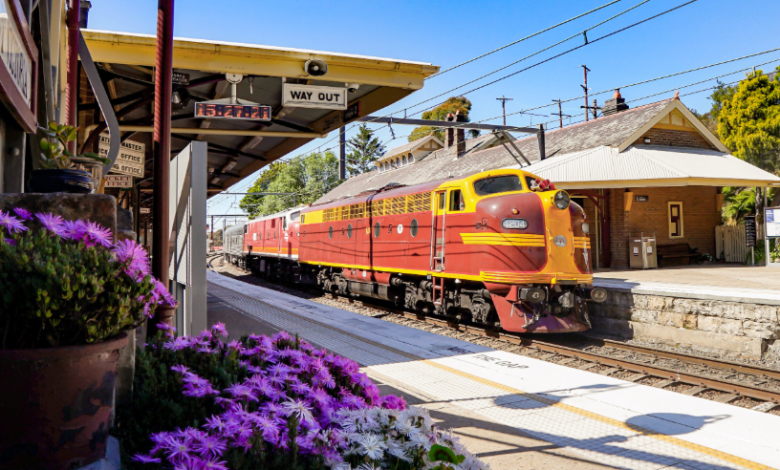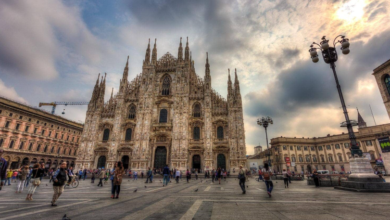Vintage Train Sets: A Timeless Journey on Rails

Vintage train sets evoke a sense of nostalgia and wonder. Their craftsmanship, mechanical charm, and historical significance make them fascinating collectibles and display pieces. In this article we explore what makes vintage trains so special, how to select and care for them, and where enthusiasts often look to build a collection.
What Is a Vintage Train Set?
Vintage train sets are model railroads produced decades ago that reflect the design, materials, and techniques of their era. These sets often include locomotives, rolling stock (freight cars, passenger cars), tracks, and sometimes accessories like stations or signals. The key defining traits are:
- Older manufacturing methods and materials (tinplate, brass, early plastics)
- Design motifs matching real trains from past eras
- Mechanical or early electric propulsion systems
- Wear, patina, or signs of aging that reflect use over time
Collectors prize originality and authenticity. A set with all original parts, correct paint schemes, and minimal repairs typically holds more value.
Vintage sets span many scales (HO, O, S, Standard Gauge) and generations (prewar, postwar). Some vintage pieces were intended for children, others for serious hobbyists, and some even for display or promotional purposes.
Why Vintage Train Sets Continue to Captivate
The appeal of these models goes beyond mere toys. Collectors and hobbyists appreciate them for several reasons:
- Historical storytelling: Each train set is like a window into the past. The design, livery, and materials tell a story about the era in which it was made
- Mechanical charm: The simple, analog mechanisms gears, motors, wheels hold a tactile fascination
- Artistry and detail: Many vintage sets show fine detail, hand-painted touches, and care in construction
- Investment potential: Well preserved vintage sets tend to appreciate over time
- Decorative value: Displays of classic trains can enhance interior design, providing a conversation piece
While modern trains have digital controls and sophisticated electronics, vintage models remind the collector of a simpler, mechanical age.
See also: How to Plan for a U.S. Visit Visa from Saudi Arabia
Key Factors to Consider When Choosing a Vintage Train Set
Selecting a vintage train set requires careful thought to ensure authenticity, reliability, and satisfaction. Below are important criteria to weigh:
- Scale and gauge
Determine whether you want HO, O, S, or Standard Gauge. Compatibility with existing track or collection matters. - Era and origin
Prewar vs postwar designs differ widely in materials and value. Also check the region (US, European, Japanese) for compatibility and style. - Locomotive type
Steam engines, early electric units, or early diesel engines each come with unique mechanical demands. - Brand and maker marks
Legacy names such as Lionel, Ives, American Flyer, Marklin, Varney, and others tend to carry prestige. You may see sets offered via vintage-train collections (for example through companies like Trainz). - Original parts and restoration
Verify that key parts such as wheels, couplers, motors, and drive rods are original or compatible. - Cosmetic condition
Check for paint chips, rust, missing decals, or worn metal. Patina is acceptable; damage is not. - Functionality
Ensure the locomotive runs smoothly, without excessive friction, and that track connections and wheels are aligned.
Building and Displaying Your Vintage Train Layout
Once you acquire a vintage train set, you’ll want to build a layout or display that showcases it in the best possible manner. Below are tips to help you get started:
- Use sturdy baseboards or sheet materials to support the weight of track and trains
- Choose track sections that fit the gauge and era; ensure tight, clean connections
- Add ballast, scenery, and foliage selectively without overpowering the trains
- For display purposes, consider lighting to highlight the train and cast attractive shadows
- Leave space for maintenance access you’ll need to clean wheels, tweak couplers, and occasionally adjust alignment
- Use nonacidic display cases or shelves to protect from dust, moisture, and accidental touches
A balanced approach neither overdone scenery nor bare track often works best to let the vintage set shine.
How to Care for Vintage Train Sets
To preserve and maintain these delicate machines, adopt gentle care routines:
- Clean metal surfaces with soft brushes or microfiber cloths
- Lubricate moving parts sparingly with appropriate model lubricants
- Avoid strong solvents or abrasive materials near painted or decal-covered areas
- Store in stable temperature and humidity environments
- Replace or repair with period-appropriate parts when needed
- Handle gently avoid bending rods, stressing couplers, or excessive force
Over time small maintenance steps will keep your set in working and attractive condition.
The Joy of Collecting and Displaying
Beyond their mechanical and visual appeal, vintage train sets bring people together. Collectors gather at exhibitions, swap meets, and hobbyist clubs to share insights and admire each other’s finds. Building layouts becomes a creative outlet where artistry and engineering meet. Many enthusiasts document their collections through photography or journaling, preserving the stories behind each piece.
Vintage trains also serve as bridges between generations. Parents and grandparents often introduce younger family members to the hobby, sparking appreciation for design and history. The act of assembling, maintaining, and running these models fosters patience and attention to detail, qualities that carry beyond the hobby itself.
Collecting Vintage Sets: What to Watch Out For
When expanding a collection or buying vintage sets, keep a wary eye on these potential issues:
- Mismatched or reproduced parts that reduce authenticity
- Poor restorations that hide flaws but degrade value
- Incomplete sets lacking original cars, couplers, or connectors
- Nonfunctional locomotives with internal damage or missing wiring
- Rust, oxidation, or metal fatigue in frames or wheel assemblies
- Misleading descriptions or photos (especially in online auctions)
A cautious, detail-oriented approach helps ensure you build a collection of integrity.
Conclusion
Vintage train sets offer a window to mechanical artistry and the romance of early railroading. Their charm lies in a mixture of history, craftsmanship, and display appeal. Whether you are a newcomer or a seasoned collector, selecting the right scale, era, and condition is critical. Careful restoration and environment control help preserve value and functionality. With proper planning and appreciation, a vintage train set can become a centerpiece in your collection or display, keeping the golden age of rail alive for years to come.



